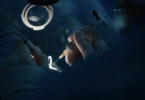On a hot summer day, it sounds like a dream. Cooling blankets and ice-filled baggies to beat the heat. Bring it on! But in the hospital world, this approach is actually being used as a legitimate medical procedure. For Sunnybrook patients who have had a cardiac arrest and are in a coma, this medically induced form of hypothermia can be a savior, in many cases sparing the brain any further injury.
Sunnybrook Health Sciences Centre is one of the higher volume hospitals offering this procedure, treating about 40 patients this way every year. Body temperature is lowered from the normal 37 degrees to about 34 degrees celcius, and held there for about one day. The cold is thought to help by protecting cells from damage and death. Simply put, that means patients recover more fully.
I spent the morning with Emergency Physician Dr. Steven Brooks, who has been researching and administering this technique for years. He walked me through each step on a medical mannequin. Chilled IV fluids are circulated through the patient’s body while clear bags of ice are stacked under the patient’s arms, neck and groin. A special machine-operated cooling blanket is also placed under the patient to help lower their body temperature. And because patients are in a coma and given sedatives, they never feel a thing.
The trick now is cooling more patients who need it. Sunnybrook is involved in a collaborative study to better understand the best way to deliver this type of treatment. And Dr. Brooks hopes to soon coordinate a special team to do the work, making this a cold approach that’s actually quite heartwarming.
For more information, click here.







